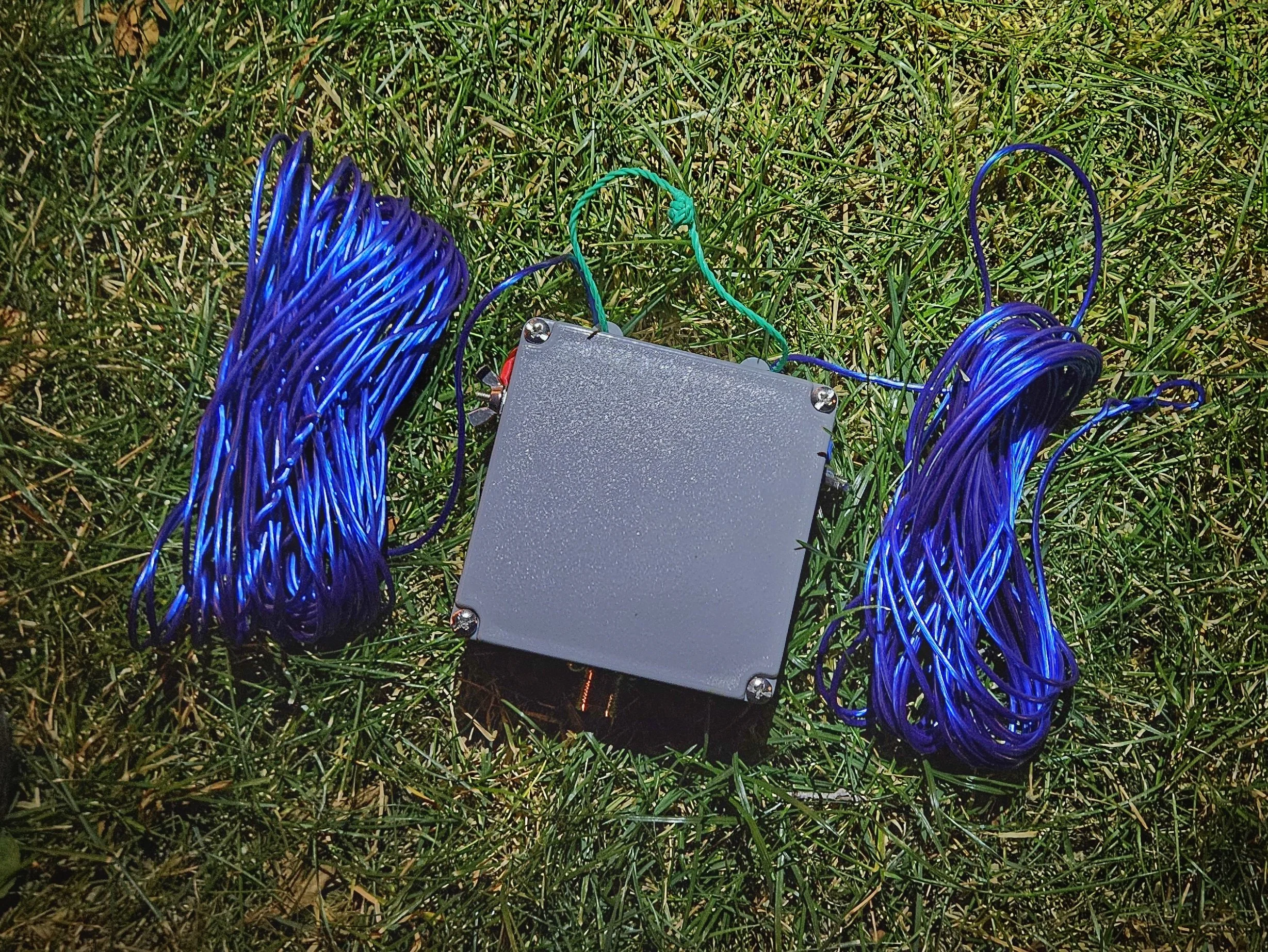"Residential" Off-Centre-Fed Dipole

The quintessential issue with having a QTH antenna is space. Most residential lots tend to be restrictive about what kind of antenna a person can install. So you want the most bang for your buck, so to speak. Or perhaps better said, the most bands for your buck. Enter the Off-Centre-Fed Dipole for residential use. There are other configurations of this that can go all the way up to 80m if you have the space to do it. But this one gives you 40m-10m.
This post was inspired by the following video by Ted Edwards, W3TB. It is an excellent video for highlighting the advantages of an OCFD. In the video, he makes mention of an article that was published in the November 2018 edition of CQ Magazine. I wrote to Ted and he was kind enough to pass it along to me. Click here for the PDF version of that article.
The OCFD antenna needs a 4:1 balun/transformer to knock the ~200ohm impedance down for the rig. And the main issue with these antennas is that they are prone to common mode current issues. To that end, there has been a lot of debate about whether this needs to be a current or a voltage balun. After field testing, we have discovered that it can be either BUT with a big caveat. If you use a voltage balun, it absolutely must be followed with a 1:1 current choke. If you use a current balun, you probably still need to follow it with a 1:1 choke to minimize CMC even further. Our general recommendation now is that you use a hybrid balun which is a 4:1 voltage transformer, paired with a 1:1 choke for Off-Centre Fed Dipoles.
Commercial products such as the 4:1 transformer produced by LDG (the grey one) may be used in conjunction with a 1:1 isolating it from the coax. You can easily make your own 4:1 current balun by creating two identical 1:1 chokes and connecting them together. The iron ferrite core choice should be either a type 31 or type 43. The following image shows enamel wire wrapped on the 2643251002 type 43 core.

To construct a hybrid balun, you will need two cores. The voltage transformer (Ruthroff) should be either Type 43 or Type 61 (which has better thermal properties for digital modes). The 1:1 choke should be a Type 31 or 43 core.

Here is an example of a hybrid balun using a Type 61 core for the transformer and a Type 43 core for the choke.

What makes this a "residential" antenna is the shorter overall length. And, it differs a bit from other OCFDs in that it isn't exactly the typical 1/3 2/3 split. This antenna uses 27' and 41' measurements. The article and video goes into full detail about the design considerations as well as the SWR readings - all of which are manageable with an onboard or external tuner. This convenience with low trade offs, as well as gain and the directional nature of this antenna make it an awesome choice for a home setup or for portable use.

The 1:1 current balun version was housed in a waterproof exterior electrical box. Attaching 200 ohms worth of resistors across the antenna connections showed really good SWR readings under 2:1 on 40m, 20m and 15m. It was slightly over 2:1 on 10m. None of these would be a problem for a rig's internal tuner to clean up.


I ran a WSPR test on this antenna on 30m and this map was the result. As you can gather, the antenna has awesome coverage of North America, Western Europe, and South America! The added perk is you can aim this antenna wherever you want to work more as Ted does for contesting. If you're looking for a slick antenna for your QTH or portable, look no further than the Off-Centre-Fed Dipole!
Thanks for checking out this build!
VE5REV 73!
